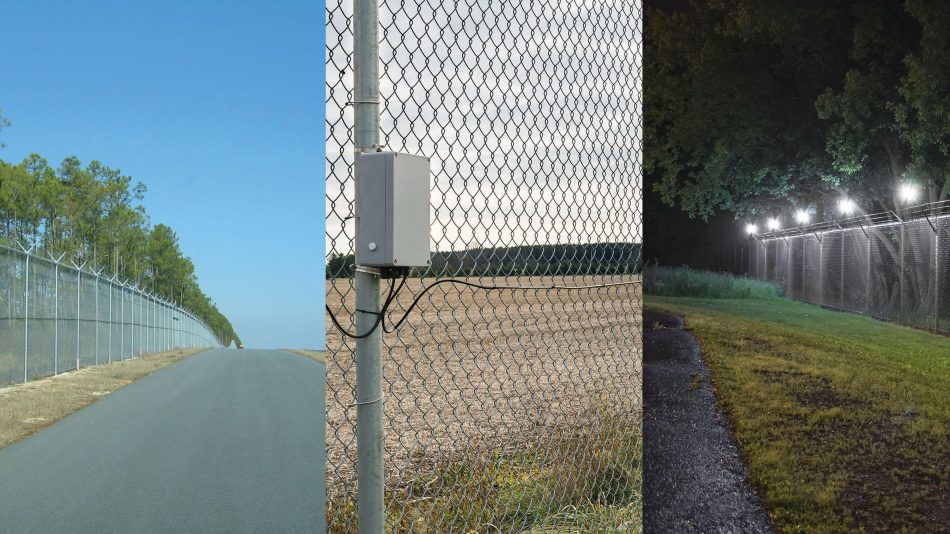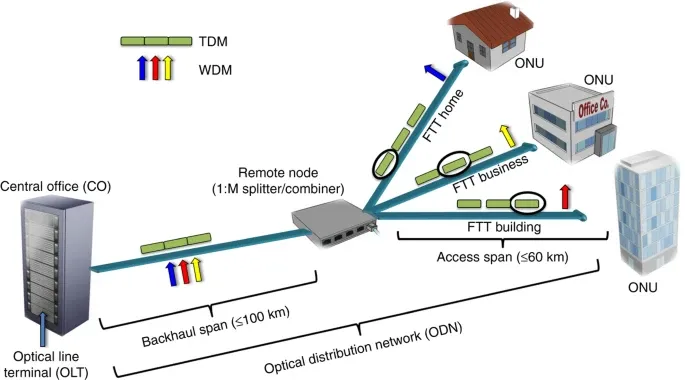Top Reasons a Fiber Security System Outperforms Traditional Security Networks
Secure Your Residential Or Commercial Property With Trusted Fiber Optic Safety Solutions
In a period where security threats are significantly innovative, the need for effective protection solutions is critical. Fiber optic safety and security systems stand out by providing exceptional reliability and efficiency, leveraging innovative light transmission innovation to improve surveillance abilities. security fibers. Comprehending the intricacies of fiber optic security can brighten the course to protecting your building a lot more successfully.
Advantages of Fiber Optic Security
Fiber optic protection options supply a variety of benefits that make them progressively important in today's electronic landscape. Among the most significant advantages is their remarkable bandwidth ability, which enables for the transmission of large amounts of information over cross countries without considerable signal degradation. This capability is particularly useful for safety and security systems that rely upon high-def video surveillance and real-time monitoring.
In addition, fiber optic cable televisions are naturally much more safe and secure than typical copper circuitry. They are unsusceptible to electromagnetic disturbance, making them less prone to hacking or eavesdropping. This enhanced safety and security is critical for safeguarding delicate data and maintaining the honesty of security systems.
Additionally, optical fiber are more durable and immune to ecological variables, such as moisture and temperature level variations, guaranteeing long-lasting integrity and minimized upkeep costs. The lightweight nature of fiber optic wires likewise simplifies installment processes, allowing for higher adaptability in system layout.
How Fiber Optic Equipment Work
In modern safety and security applications, the procedure of fiber optic systems relies upon the principles of light transmission through flexible glass or plastic fibers. These fibers are made to bring light signals over long ranges with marginal loss, making them excellent for sending data related to safety and security tracking. The core of the fiber, surrounded by a cladding material, makes certain that light signals continue to be consisted of within the core through a sensation referred to as complete interior reflection.
When integrated right into protection systems, fiber optic cable televisions can send data from various sensors, such as electronic cameras, activity detectors, and alarms, to a central monitoring terminal. The high data transfer ability of optical fiber enables the transmission of huge quantities of data concurrently, making it possible for real-time security and punctual action to possible dangers.

Kinds Of Fiber Optic Safety Solutions
Numerous kinds of fiber optic safety services have arised to enhance surveillance and protection across different settings. One popular solution is fiber optic border intrusion detection systems (PIDS), designed to monitor and protect building boundaries via the detection of vibrations and disturbances along fiber optic cables. These systems give real-time informs, enabling timely responses to unauthorized access efforts.
One more reliable service is fiber optic video clip monitoring. This modern technology leverages high-def video cameras attached using fiber optic cables to transfer video clip information over long distances without substantial loss of top quality. This configuration is specifically advantageous in navigate to these guys extensive areas, such as flight terminals and industrial sites, where conventional copper cords may falter.
In addition, fiber optic sensing units are increasingly made use of for ecological tracking, identifying adjustments in temperature, pressure, or acoustic signals that could show safety breaches or dangerous problems. These sensing units use high sensitivity and precision, making them ideal for critical framework security.

Installation and Upkeep Tips
Efficient setup and upkeep of fiber optic safety services are essential for guaranteeing their ideal efficiency and longevity. To start with, it is necessary to prepare the installation meticulously, thinking about the design of the property and determining potential susceptabilities. Fiber optic cables must be routed firmly, staying clear of sharp bends or twists that might endanger their integrity. Make use of professional-grade ports and rooms to ensure robust links and defense from environmental variables.
During setup, it is suggested to conduct detailed screening of the system to validate that all parts are functioning correctly. Regular maintenance checks should be scheduled to examine the fiber optic cords for any type of indicators of read the article wear or damages, along with to guarantee that connections stay safe. Cleaning up the ports regularly is additionally important to stop signal loss because of dust or debris.
Furthermore, maintaining an updated inventory of mounted parts and their requirements can promote less complicated troubleshooting and upgrades. By sticking to these setup and maintenance tips, home owners can take full advantage of the efficiency of their fiber optic safety solutions, making certain a reliable protection against potential threats.
Comparing Costs and Performance
When reviewing fiber optic safety services, recognizing the equilibrium between expenses and effectiveness comes to be vital (security fibers). Organizations must take into consideration the in advance investment, ongoing upkeep expenses, and the lasting value these systems give. While fiber optic systems may need a higher first installation price compared to typical copper electrical wiring, their longevity and lowered vulnerability to electro-magnetic interference commonly translate to reduced maintenance costs check my blog gradually
Performance is one more essential element; fiber optic safety and security systems offer improved information transmission speeds and enhanced integrity. They can cover larger distances without signal degradation, making them suitable for large residential or commercial properties or remote locations. The high bandwidth capability sustains advanced security applications, such as high-def video clip surveillance and real-time monitoring, which are crucial for comprehensive safety administration.
Inevitably, the choice in between cost and efficiency should be directed by details safety demands and risk evaluations. Organizations needs to analyze their special needs, thinking about factors like residential property size, security hazards, and technical innovations. By carrying out a comprehensive cost-benefit evaluation, stakeholders can make informed decisions that straighten with their security goals while making certain an audio financial investment in fiber optic technology.
Final Thought
In final thought, fiber optic security options provide significant advantages in regards to performance, dependability, and immunity to ecological disturbances. These systems boost monitoring capacities and perimeter protection, making them an efficient selection for detailed protection. First installment expenses may be greater, the long-lasting benefits, consisting of decreased upkeep and superior capability, validate the financial investment. Ultimately, the fostering of fiber optic innovation represents a forward-thinking method to securing properties against developing security dangers.